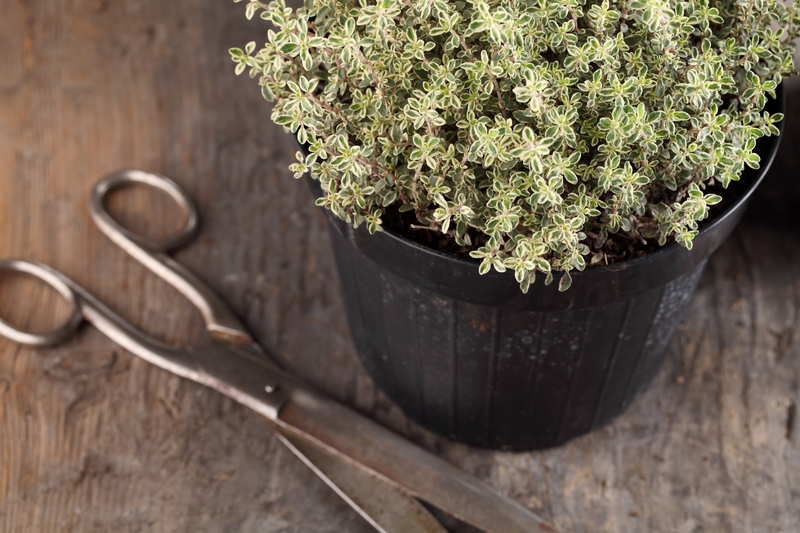Dynamic Hedge Trimming Shapes and Cutting Techniques
Posted on 26/08/2025
Dynamic Hedge Trimming Shapes and Cutting Techniques: The Art and Science of Pristine Landscapes
Well-maintained hedges are not just a boundary for gardens--they are living sculptures that define outdoor spaces and breathe life into any landscape. Dynamic hedge trimming shapes and cutting techniques offer homeowners, landscapers, and gardening enthusiasts the opportunity to create visually stunning and healthy hedges. In this comprehensive guide, we unravel the secrets behind dynamic hedge shapes, explore advanced pruning methods, and share expert tips to achieve professional, crisp results. Whether you're preserving privacy with traditional straight lines or expressing creativity through artistic topiary, mastering dynamic hedge trimming is essential for every green thumb.

Understanding Dynamic Hedge Trimming
Dynamic hedge trimming goes beyond basic maintenance. At its core, it involves sculpting live plants into precise or imaginative shapes, enhancing both aesthetic appeal and the health of the hedge. Regular trimming and shaping not only control growth but also encourage bushier, more vibrant foliage.
- Dynamic shapes: Refers to geometric or freeform designs--such as spheres, cones, waves, animals, and even abstract art--using living shrubbery.
- Cutting techniques: Involves the selection of proper tools, timing, and methods for removing branches or leaves to achieve the desired effect.
Benefits of Dynamic Hedge Trimming
- Enhanced Curb Appeal - Properly trimmed hedges elevate property value and charm by structuring gardens and pathways.
- Improved Plant Health - Strategic removal of old, diseased, or crossing branches allows sunlight and air to penetrate, reducing the risk of disease.
- Personal Expression - Experimenting with dynamic hedge trimming shapes enables creative self-expression within garden spaces.
- Wildlife Habitat Creation - Certain hedge types support birds, insects, and small mammals by providing shelter and food sources.
Popular Dynamic Hedge Shapes
The possibilities for hedge trimming shapes are nearly limitless, ranging from tight geometric forms to whimsical sculptures. Here are some of the most popular and impactful shapes to consider:
1. Geometric Forms
- Squares/Rectangles: Classic and formal, ideal for garden boundaries and structure. Achieved through precise measurements and straight-line trimming.
- Spheres/Balls: Offer a soft, modern look. Spheres require even, radial cuts and careful assessment from multiple angles.
- Cones/Pyramids: Bring vertical interest and elegance, often used at entryways or as focal points.
- Waves/Curves: Add whimsical movement and a contemporary feel to long hedgerows.
2. Topiary Art
- Animals: From birds to elephants, animal shapes capture attention and delight children.
- Spirals/Obelisks: Frequently seen in formal gardens, these twists impress with their technical challenge and eye-catching appearance.
- Lettering: Spell out words or initials--perfect for themed events or commercial properties.
3. Informal and Naturalistic Styles
- Cloud Pruning: Japanese-inspired, featuring smooth, undulating masses that resemble puffs of cloud.
- Natural Screens: Looser trim that encourages plants' native habits for a laid-back, organic vibe.
- Layered Hedges: Varying heights or textures to mimic natural bushland.
Essential Hedge Trimming Tools
Achieving precise hedge shapes and cuts requires quality tools and a bit of know-how. Here are the main types you'll need:
- Manual Hedge Shears: For small to medium hedges and fine shaping.
- Electric/Powered Hedge Trimmers: Ideal for large or long hedges, reducing fatigue and increasing efficiency.
- Pruning Secateurs: For detail work and removing thick stems.
- Loppers and Pruning Saws: For cutting through older wood or reshaping mature hedges.
- String and Stakes: To ensure straight lines and symmetrical shapes.
- Level or Spirit Level: For geometric forms where precision is essential.
- Topiary Frames: Wire or mesh frames help guide complex designs, especially for beginners.
- Step Ladders: For reaching taller sections safely.
Maintaining Your Tools
Clean, sharp blades make for healthier cuts, reducing plant stress and the risk of disease. After each session, wipe blades with disinfectant, sharpen regularly, and lubricate moving parts for smooth operation.
Best Practices for Dynamic Hedge Trimming
1. Timing is Key
- Deciduous Hedges: Best pruned in late winter or early spring before new growth starts.
- Evergreen Hedges: Early to mid-spring, with follow-up trims in mid- to late summer, is ideal for crisp definition.
- Flowering Hedges: Prune after the bloom to avoid removing flower buds.
Avoid trimming on very hot, dry days or during frost, as these extremes stress the plants.
2. The Golden Rule: Tapered Sides
For lush growth all the way to the base, always trim hedge sides slightly angled inward, so the base is wider than the top. This shape ensures sunlight reaches lower branches, preventing thinning or dieback at the bottom.
3. Plan Your Shape
- Use stakes and string for straight lines.
- Draw sketch or mark guiding points (chalk, twine) for curves and complex forms.
- Assess from multiple viewpoints as you work to maintain symmetry and perspective.
4. Practice the "Little and Often" Approach
Rather than drastic cuts, regular small trims yield denser, healthier dynamic hedge shapes. For newly planted hedges, prune lightly to encourage robust, bushy growth.
Step-by-Step Dynamic Hedge Shaping Techniques
Creating a Geometric Hedge Shape
- Mark Your Lines: Use stakes and taut string at the desired heights and edges.
- Remove Major Growth: Begin with rough cuts, trimming away tall or wayward stems using electric trimmers or shears.
- Refine Your Shape: Slowly bring your cut closer to the guideline, moving from top to bottom, and checking for straightness.
- Address Corners and Ends: Pay special attention to maintain sharp edges--using hand shears for fine-tuning.
- Double-Check Alignment: Step back frequently; use a level for rectangles and squares. Make adjustments as needed.
Shaping Spheres and Cones
- Visualize the Shape: Imagine the central axis and maintain equal distances from the center to the edge all around.
- Work in Sections: Trim evenly, rotating around the plant to maintain perspective and symmetry.
- Use a Template: Homemade circular guides or topiary frames can assist beginners.
- Mind the Base: Keep the bottom slightly wider than the top for consistent density and light exposure.
Artistic and Topiary Techniques
- Topiary Frames: For elaborate designs (animals, spirals, letters), secure a sturdy wire frame over the plant. Trim any growth poking through until the intended shape is revealed.
- Freehand for Experts: Advanced gardeners may forgo frames, but should step back often to check proportions, correcting as needed with precise cuts.
- Layered and Cloud Forms: Use hand shears to contour multiple, rounded "cloud" sections. Start with the broadest sections and refine upwards.
Advanced Tips for Dynamic Hedge Maintenance
Encourage Denser Growth
- Trim young, growing tips regularly to foster thick foliage.
- Feed hedges with balanced fertilizer in spring and after major trims.
- Mulch the root zone to conserve moisture and regulate temperature.
Corrective Pruning
- Remove dead, diseased, or crossing branches promptly.
- For gaps, cut back lightly to a healthy bud to stimulate new shoots.
- Reinvigorate overgrown hedges through phased, selective hard pruning over two or three seasons rather than all at once.
Dealing with Common Hedge Problems
- Lopsided Shapes: Re-establish the outline with stakes and string; selectively trim to even out growth.
- Patchy or Thin Bases: Encourage light to the base by tapering sides and thinning upper growth.
- Pest or Disease Outbreaks: Remove affected sections, disinfect tools, and consult local experts for targeted treatments.
Choosing the Right Hedge Species for Dynamic Shaping
Not all plants respond equally well to frequent shaping. When planning dynamic hedge trimming projects, consider these popular, versatile options:
- Boxwood (Buxus): The classic topiary plant; dense and slow-growing, it clips beautifully into most shapes.
- Yew (Taxus): Long-lived, shade-tolerant evergreen, prized for deep green foliage and tolerance of drastic cutting.
- Ligustrum (Privet): Fast-growing, making it ideal for privacy screens and large, bold shapes.
- Lonicera (Honeysuckle): Responds quickly to clipping, great for informal and cloud-shaped hedges.
- Photinia, Escallonia, and Pittosporum: Offer colorful foliage and thrive with regular pruning in warmer climates.
Tip: Select species suited to your climate and soil. Consult local nurseries for advice tailored to your region.
Safety Precautions During Hedge Cutting
- Always wear protective gear - gloves, safety glasses, and ear protection when using power equipment.
- Use ladders with caution; ensure they are on stable ground.
- Keep tools away from children and pets.
- Be mindful of nesting birds and wildlife--delay trimming if active nests are found within hedges.

Environmental Considerations and Seasonal Care
Dynamic hedge trimming supports sustainability when done responsibly. Recycle green waste as mulch or compost, and avoid chemical sprays that might harm local biodiversity. Aim to finish major pruning before bird nesting season (typically March to August in many regions).
Seasonal Care Checklist
- Spring: Feed, mulch, and carry out formative or maintenance trims.
- Summer: Final shaping--keep an eye for drought and increase watering as needed.
- Autumn: Light trim, clear fallen leaves, and inspect for pests/diseases.
- Winter: Rest period for most hedges; major hard pruning if required (excluding frost-prone weather).
Conclusion: Achieve Lasting Garden Beauty with Dynamic Hedge Trimming
Mastering dynamic hedge trimming shapes and advanced cutting techniques empowers gardeners to transform hedges into living works of art while maintaining plant vitality. By understanding plant selection, adopting proper methods, and trimming consistently, both simple geometric forms and elaborate topiary can thrive. Allow your creativity to blossom, and remember--the healthiest, most eye-catching hedges are shaped by patience, knowledge, and care.
Whether you're a passionate DIY gardener or a professional landscaper, these best practices and techniques ensure your next dynamic hedge trimming project delivers lasting impact and unrivaled curb appeal.

